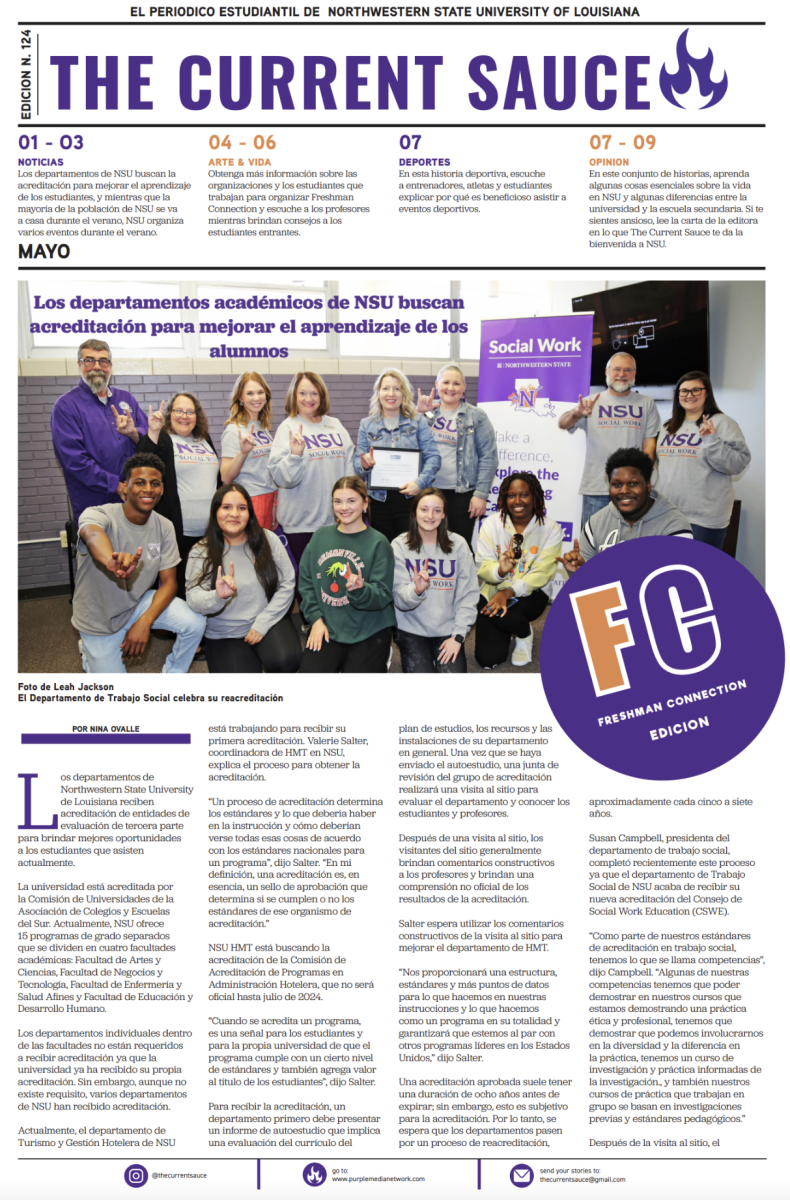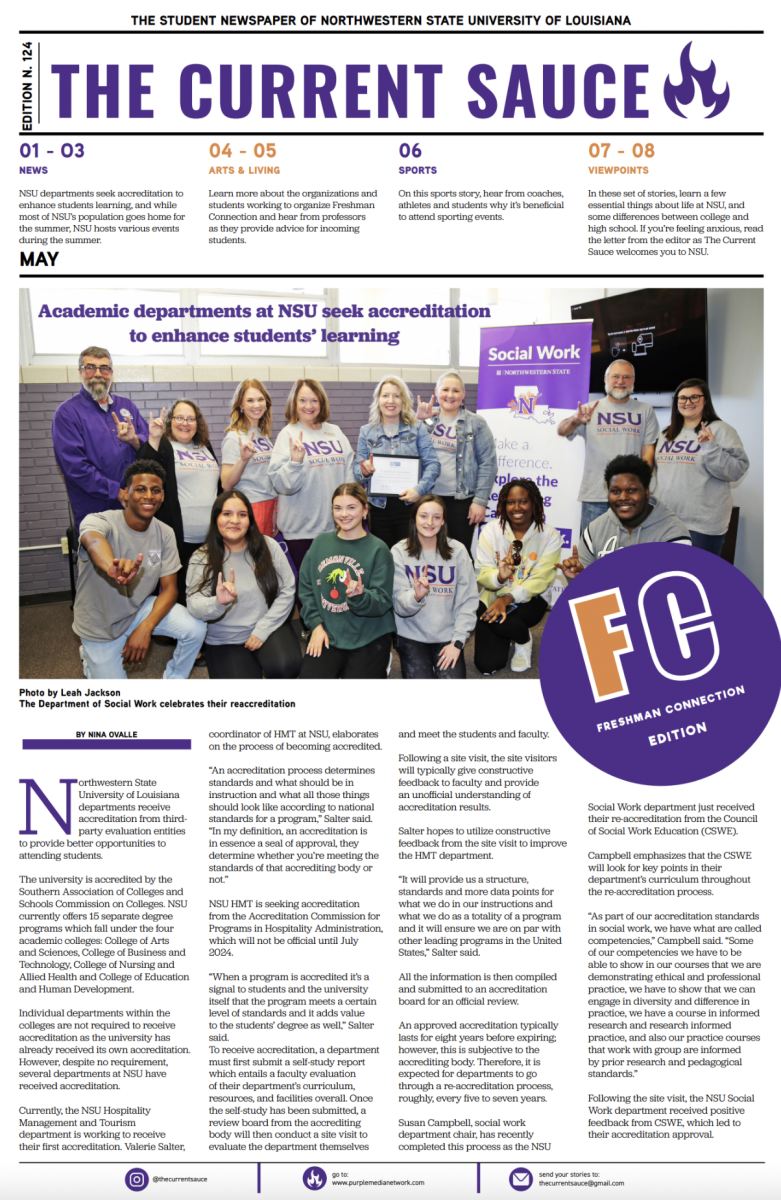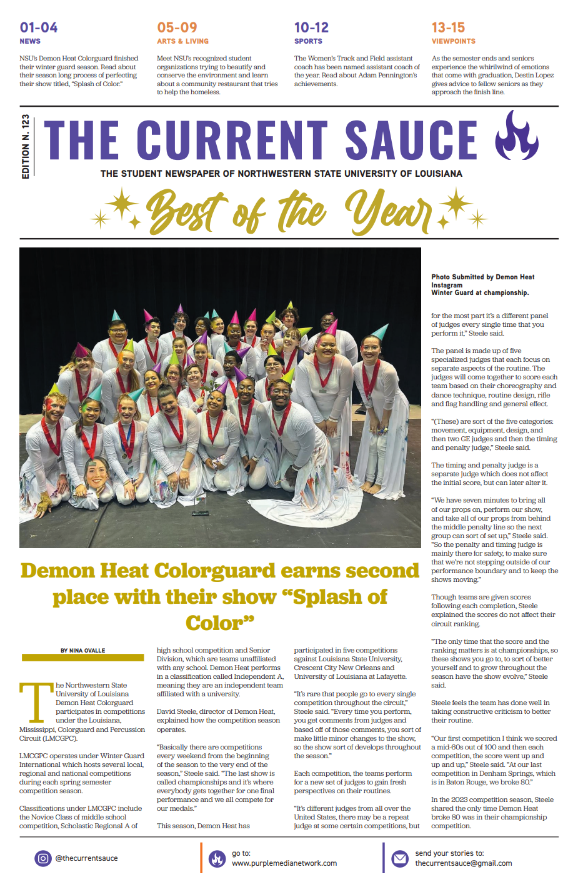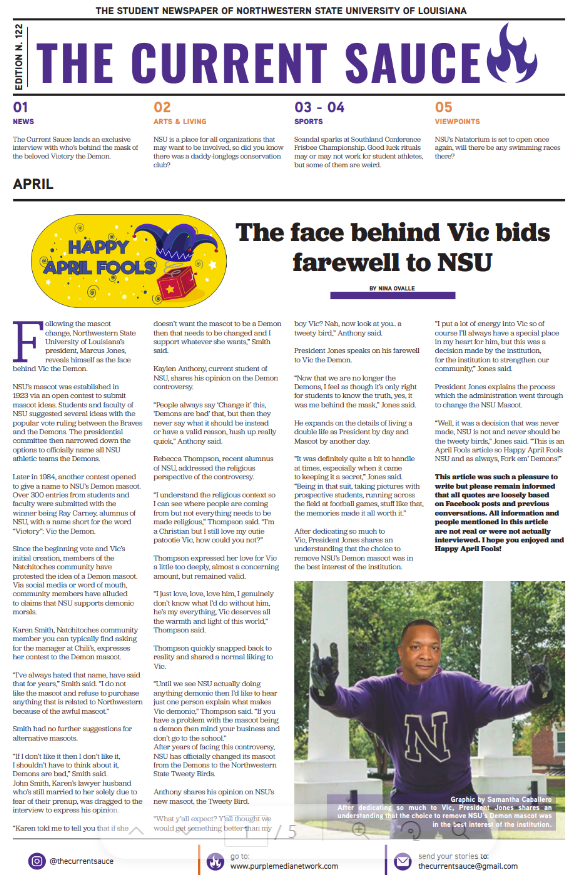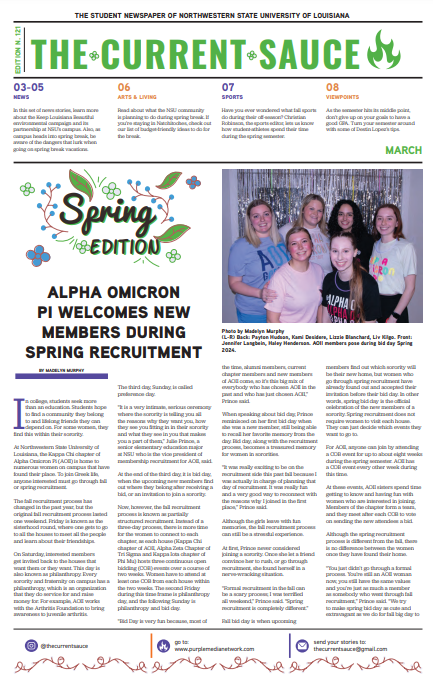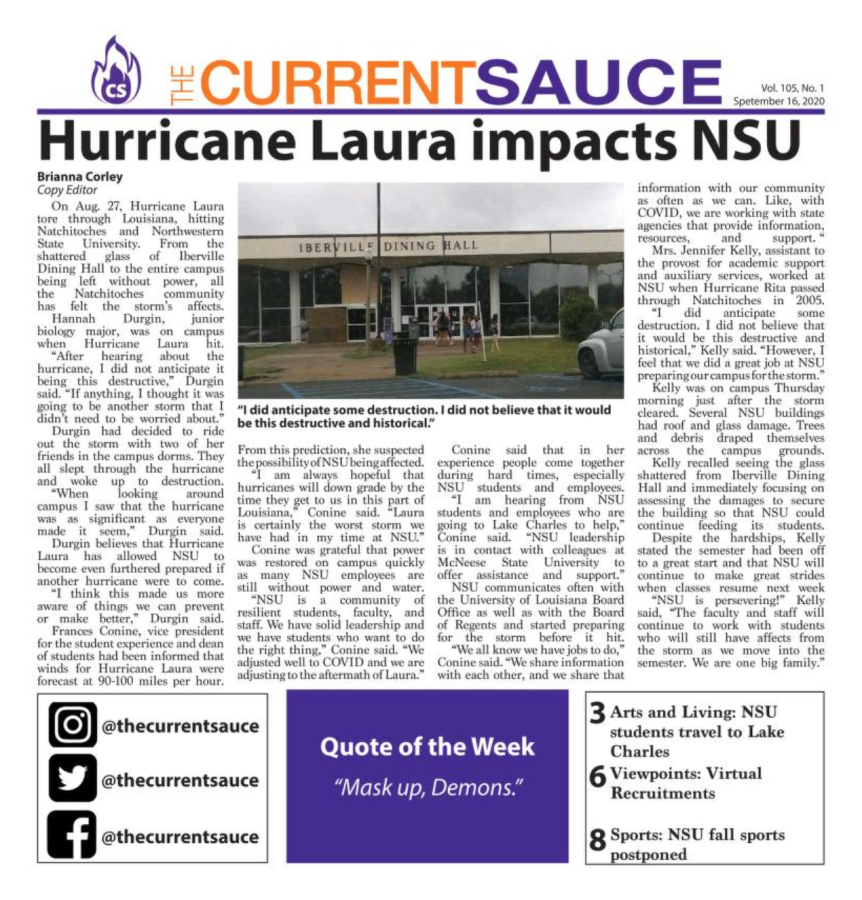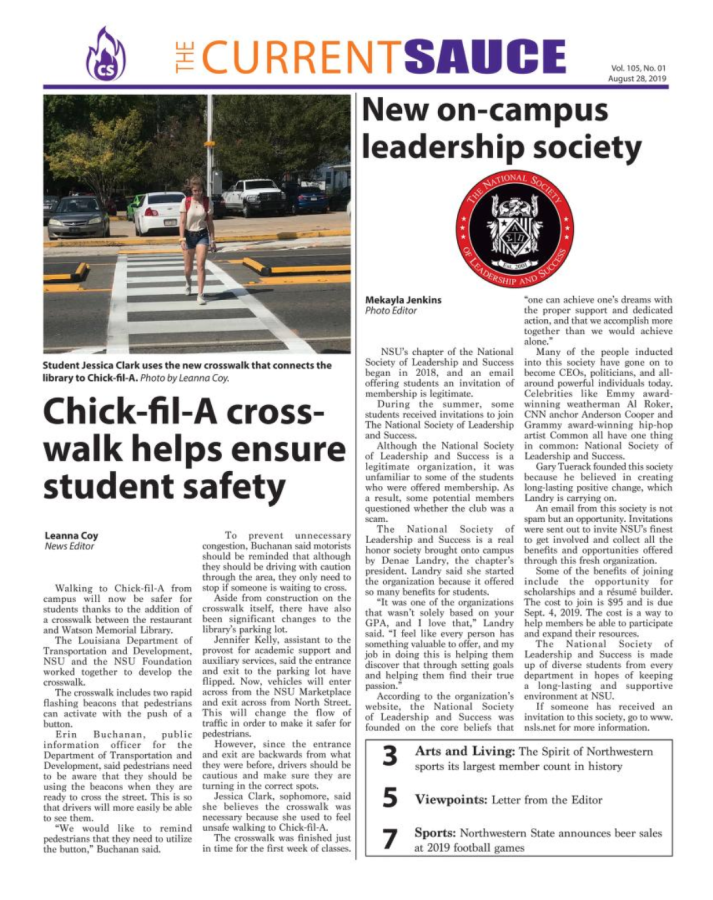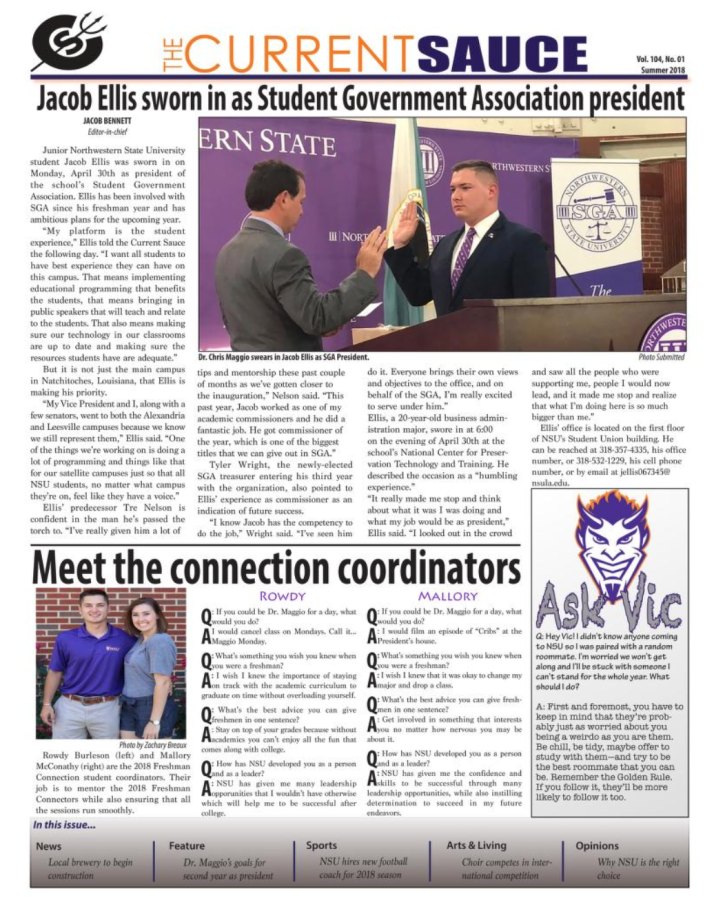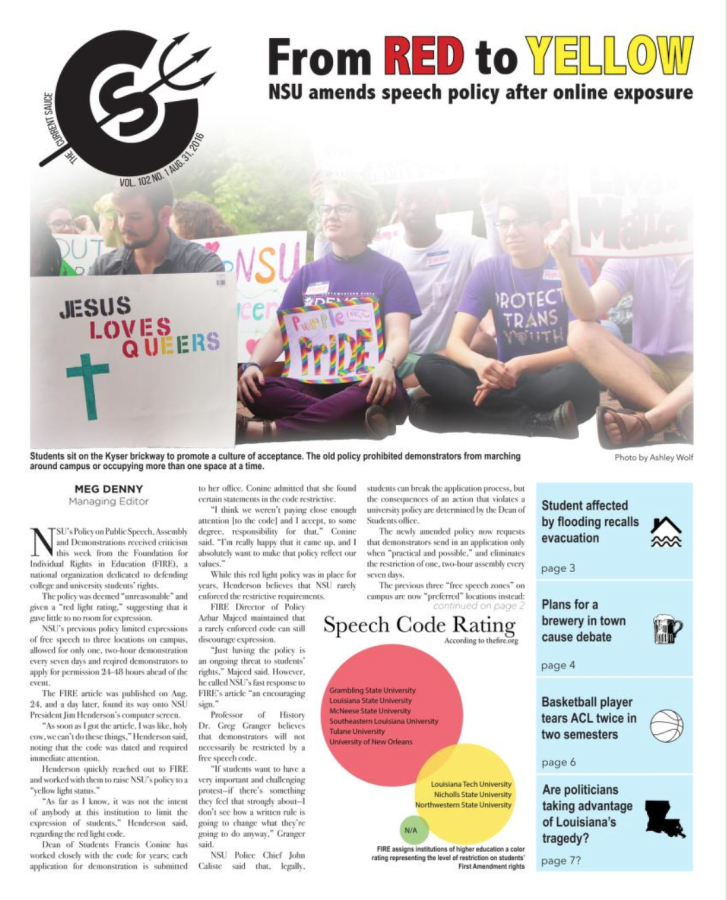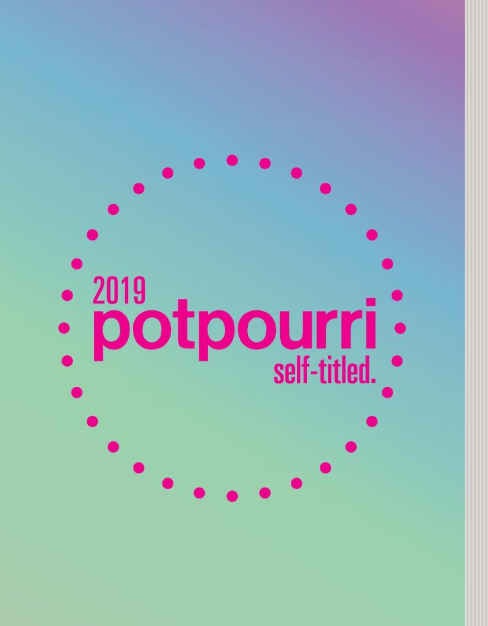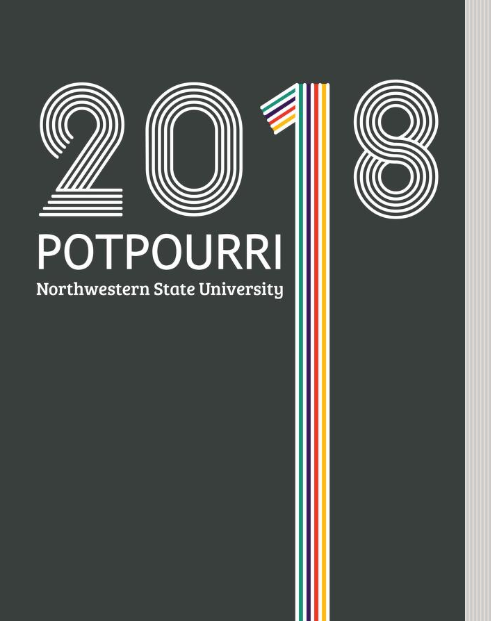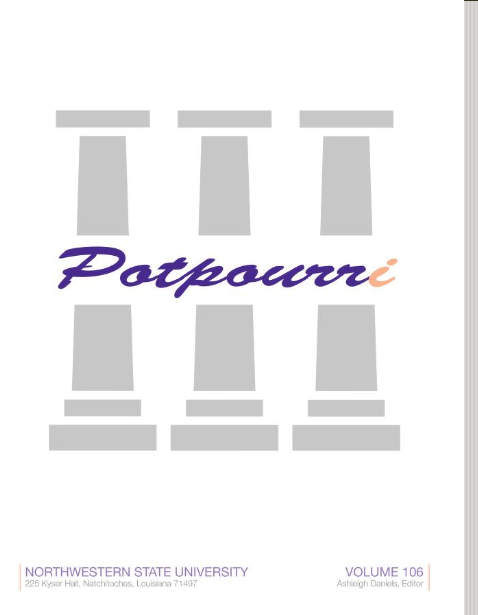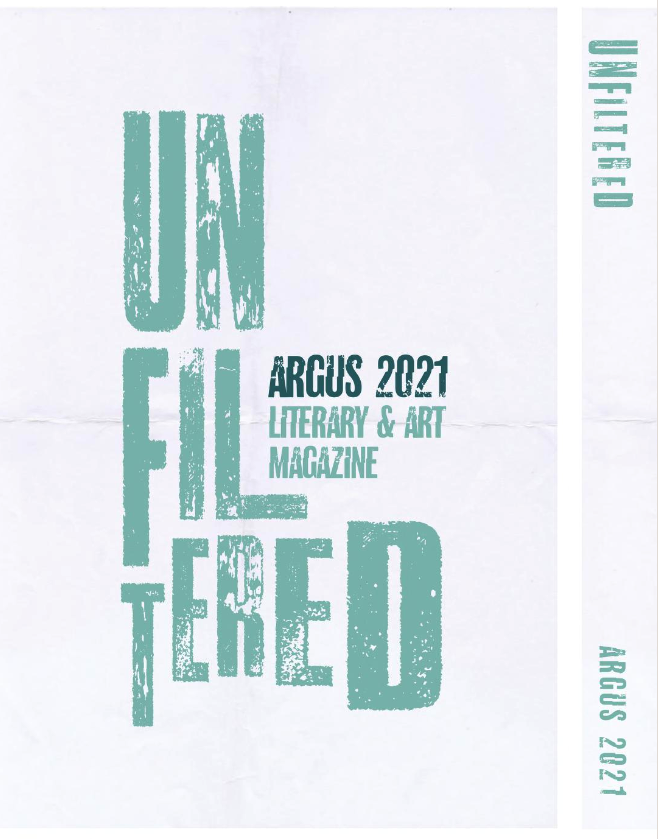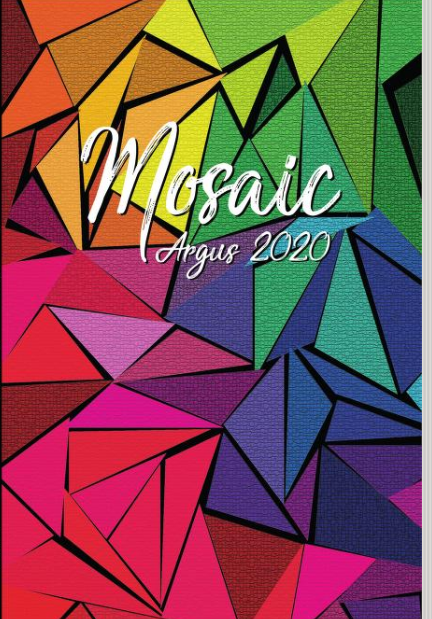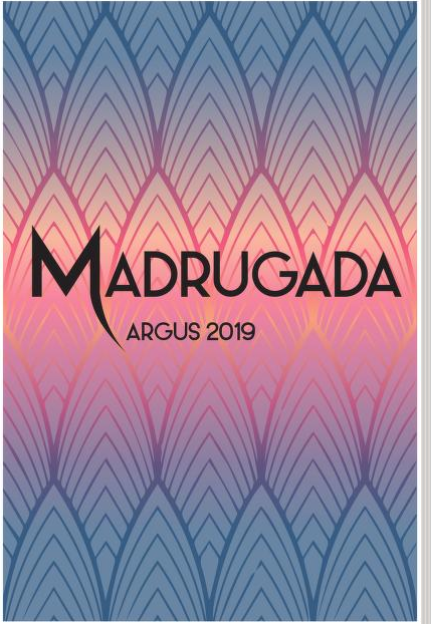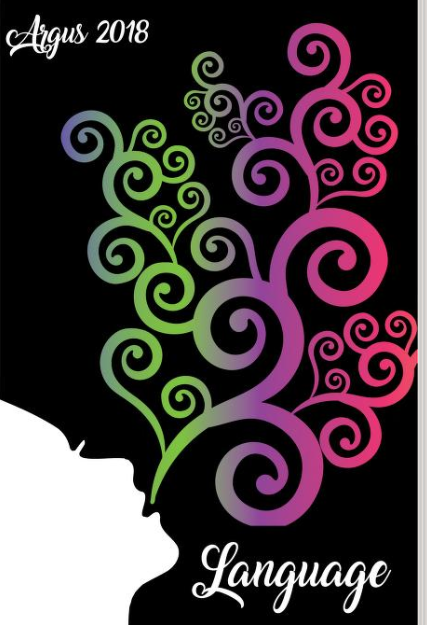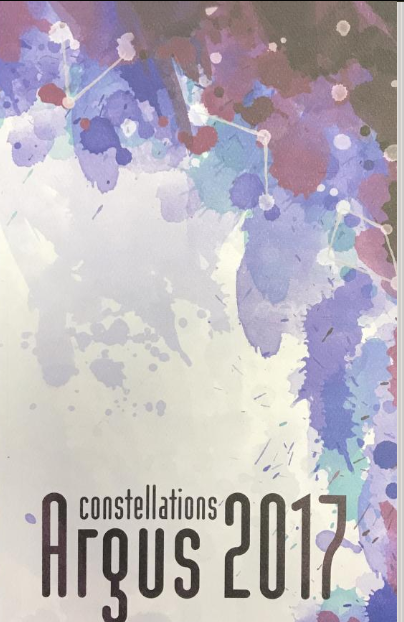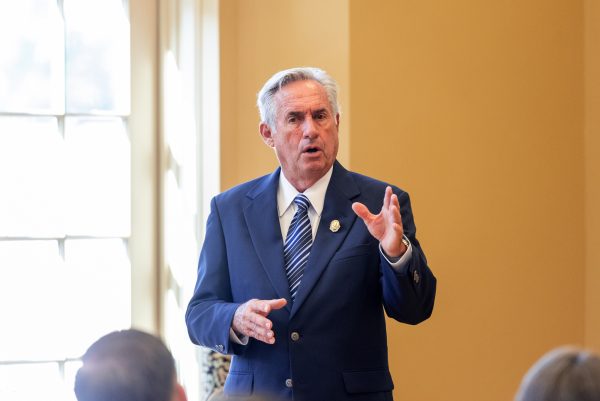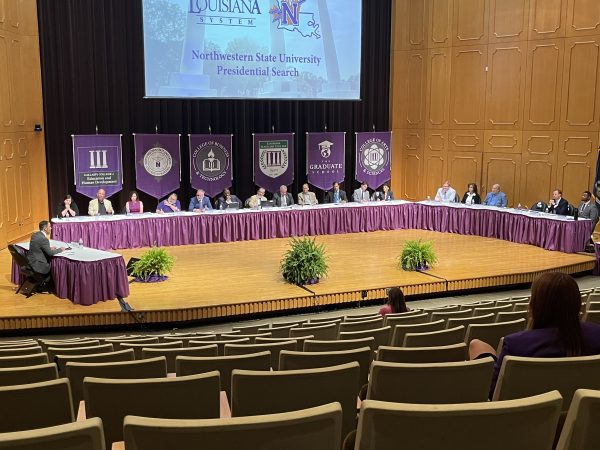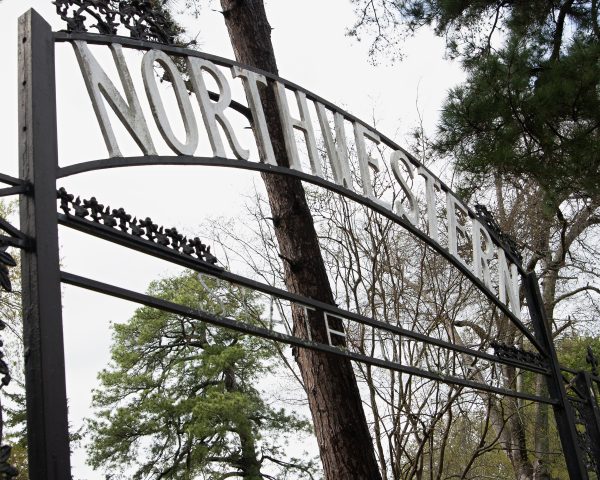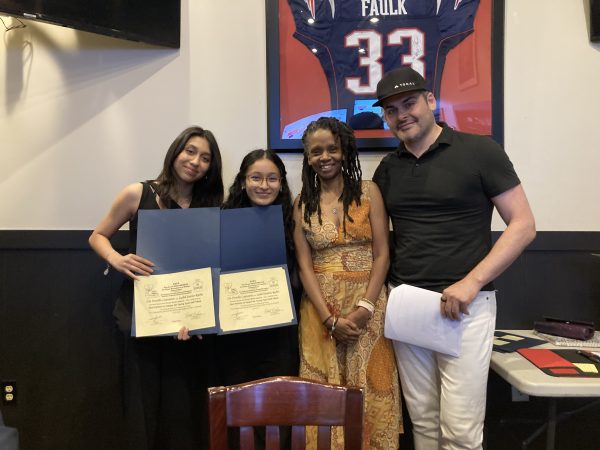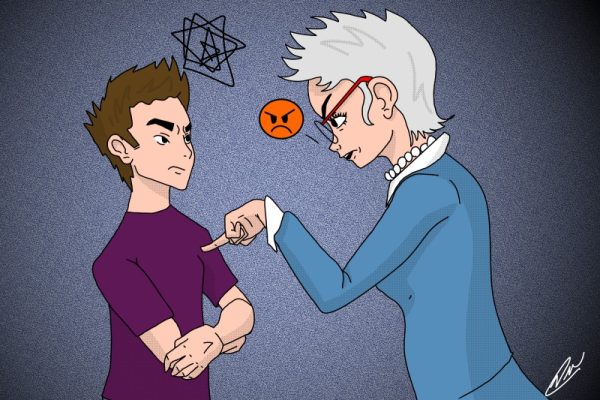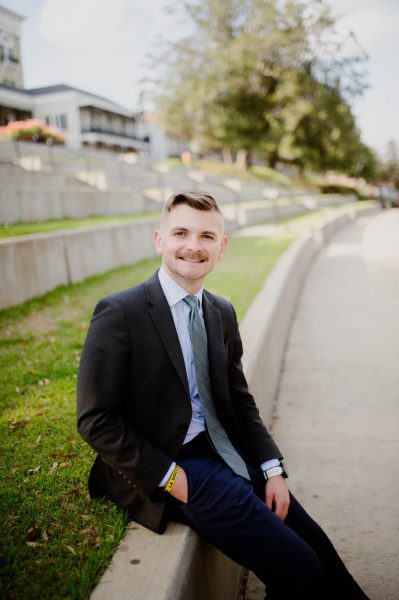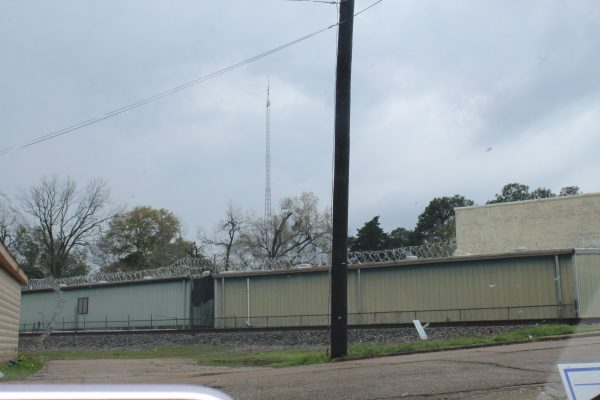An Argus scandal between The Current Sauce and then President Alost in 1993 was a censorship issue
Who would have ever thought that a note to the editor-in-chief of The Current Sauce back in 1993 from the president of the university, regarding a poem published by Argus, would still be relevant today?
Who would have ever thought that a note to the editor-in-chief of The Current Sauce back in 1993 from the president of the university, regarding a poem published by Argus, would still be relevant today?
Well, we are choosing to name the building replacing John S. Kyser Hall after one of the men involved in the whole scenario, former President Robert Alost, so maybe pay attention to what I have to say next. In this case, history is recent, and the people of the past are still involved today.
Here’s a little background on the two main people we are focusing on today. First, former Northwestern State University of Louisiana President Robert Alost. He was president from 1986-1996, and died only just recently, in April of 2020. Alost was praised for his historical improvement of NSU during his presidency, with enrollment going from just 5,000 to over 9,000 during his 10 years.
According to an article written by Director of Public Information and Media Relations Leah Jackson on NSU News, titled “Former NSU president Dr. Robert Alost dies,” we know Alost has many official merits to his name.
“Alost was inducted into the Northwestern Alumni Hall of Distinction, the Long Purple Line, in 2005 and was named a Natchitoches Treasure in 2018. Last year he was inducted into the Mrs. H.D. Dear Sr. and Alice E. D. Dear School of Creative and Performing Arts Hall of Fame,” said Jackson’s article.
Finally, we shall introduce the second person involved. In the same article mentioned above, Jackson includes a quote from Jim Henderson (also going by the name James B. Henderson).
“President Alost led Northwestern State through a difficult era, and established a standard of not just surviving adversity, but thriving in its midst,” said University of Louisiana System President Dr. Jim Henderson. “He was simultaneously imposing and infinitely approachable. Personally, I am forever grateful for his mentorship and friendship.”
Henderson is also an especially important person in the history of NSU for many reasons. On the first of January 2017, he became the president of the state’s largest higher education system, the University of Louisiana System. In an article published on the RH Perry & Associates web page titled “Dr. James B. Henderson named UL System president,” we learn more about what exactly the UL system is.
“One of the 20 largest higher education systems in the nation, the University of Louisiana System governs Northwestern State University, Louisiana Tech University, Grambling State University, University of Louisiana-Lafayette, University of New Orleans, Nicholls State University, University of Louisiana-Monroe, McNeese State University and Southeastern Louisiana University.”
Before this, Henderson was also President of Northwestern State University from 2015-2016. There was a noticeable increase in enrollment during his time as president as well. “A native of Shreveport, Henderson is a 1994 graduate of Northwestern with a bachelor’s degree in journalism and English.”
There we go, we have successfully traveled back in time to 1993.
At this time, Henderson was the editor-in-chief of the local school newspaper, The Current Sauce. One of our very own! In one of the publications found in the archives of The Current Sauce, now located on the Purple Media Network home page, we can read an article written and submitted by Henderson titled “Editor defends action of University president in Argus ‘scandal,’” he addresses a situation where the school literary magazine published a poem by Grant Williams.
This poem contained content that could be seen as homoerotic in many ways (considering Williams was the founder of the school’s first LGBTQ+ club at the time). It does seem there are many factors leading to this poem seeming ‘explicit’ in nature, some of which included the images published next to and with this poem, which can only be described as raw and, well, explicit, in all honesty.
The pictures are referenced by then President Alost in his letter to Argus so I must assume they added to the degree of explicitness in his opinion as well. I have chosen to include the poem and Alost’s letter, reformatted by me, of course, in my article in the same way Henderson did in his article back in 1993, for the same reasons as his, being that I want you to be able to read and make your own educated opinions of this situation as I have.
Power Tools and Eroticism – Grant Williams.
I want to do something to you you would never do on your own,
Let me rub you with my sandpaper hands and scrape you on the
bone,
It’s hard to be in love because we’re both perverts,
Let me hold you in my razor blade arms and give you your just
desserts,
I can work my magic, ease your plight, and make you feel at home,
Let me kiss you with my rust worn lips and we’ll sink into the
unknown.
So just lay back and be at peace with one of your own kind,
And let me give you a chainsaw massage that is guaranteed to blow
your mind.
Now onto the next factor, President Alost’s letter to the Argus staff of 1993 regarding their latest publication containing the poem by Williams.
Letter from President Alost concerning poem
I have had the opportunity to review the latest edition of Argus ’93, and I wish to advise each
Of you relative to what I believe is poor professional judgment on each of your part in the publishing of “Power Tools and Eroticism,” found on page sixty-six (66) of the publication.
I have reviewed the material contained on the above named page along with the graphic
illustration immediately above the piece, and I find it violative of the contemporary community
standard at Northwestern as in my view it appeals to prurient sexual interests. Furthermore, I
believe that the piece depicts sexual conduct in a patently offensive way. Finally, I do not believe
that the piece contains serious literary, artistic, political or scientific value.
In addition, I have requested a faculty group (five faculty which includes three members of
the faculty senate) and a community group (city officials, parish officials, ministers, school
personnel, chamber of commerce representative) to review this work. Also, Judge Peyton
Cunningham has reviewed this work and none have found the article to have any literary or artistic value. I realize that my opinions are subjective. This is why I sought the consultation of others. However, based on their comments and my thoughts, I do not intend to retreat from my opinion, in this instance, as I am reminded of the U.S. Supreme Court’s statement in Miller, 413 U.S. 15, Noting: [N]o amount of “fatigue” should lead us to adopt a convenient “institutional view of the First Amendment—because it will lighten our burdens.
I suggest that in the future you familiarize yourselves with the First Amendment rulings on
Freedom of Speech, particularly the Miller decision, and ask yourself the same tough questions
faced by the Courts and not adopt an “anything goes” mentality. The mission of universities, in my opinion, is not simply to encourage directionless irresponsible thinking for its own sake. I believe that the additional responsibility of higher education is to instill the community’s moral and ethical responsibility to those students within our charge. With the publication of “Power Tools and Eroticism,” you have failed in your responsibility, in my opinion. I am, therefore, offering you legal advice as to how to proceed so that this does not occur again. I will ask legal counsel to meet with you prior to the fall 1993 semester. I would encourage you to contact me to discuss this matter at a later date if you disagree.
All of this is a lot, I know, but Henderson claimed in the first few words of his article, “Kudos to President Alost!” Now upon first thought, with the notion that Alost is targeting this poem only for its presumably gay content, it seems that Henderson is praising Alost for almost homophobic reasons!
Homophobic reasons on Alost’s part would be a really terrible thing and is not beyond a reasonable doubt for the time then, nor is it still inconceivable now, if only for better public relations management of higher authorities and public figures who would never let anything vaguely offensive or homophobic leave the mouths of anyone of mild importance. That does not dismiss the idea that homophobia still exists, it is simply more socially unacceptable on a larger level than before.
But then Henderson goes on to continue, “Finally, the head of a public university has taken a stand for decency and morality while reaffirming a strong belief in freedom of speech and academic expression.” This makes the praise from Henderson to Alost take a turn for a focus on the First Amendment.
This is when, while reading everything, I began to realize no one has mentioned a thing about anything relating to gay or homophobia. Of course, we can all assume they chose to omit targeted words on everyone’s part, but this situation between Argus and the president is all about censorship, not about anyone’s opinion of the content of the poem. Simply that it was deemed explicit and unprofessional in the school’s image, being published in the highly esteemed literary magazine Argus.
On the next page of this issue, we see an opinion article written by Bridgette Morvant and Jeff Guin discussing this very issue. Titled “Students, not community,
should judge Argus,” we see an excerpt from the author of the poem, Williams, talking about the situation themselves.
“I can only speak about the poem, because I had nothing to do with the illustration chosen to accompany it on the page,” Williams said.
The author of the opinion article here provides the information about the images, being that the “illustrations on pages 66 and 67 were far more graphic and unsettling than the poem. The illustration, ‘St. Tracy,’ by Sub-Zero Permafrost was a separate submission, not an illustration of the poem as some may have believed.”
Williams continued, quoted in the article as having said, “I merely submitted a poem to a poetry contest…I submitted the poem expecting it to be taken satirically, to poke fun at other Argus poems that I’d seen in the past and because I thought the poem was funny and bizarre. To anyone who found it offensive I sincerely apologize. That wasn’t my intention.”
The authors go on to directly reference William’s involvement in the LGBTQA+ organization on campus, “Perhaps the reason Williams’s poem gained so much attention lies in his very public role as the founder of the campus gay/lesbian/bisexual organization. This organization has also stirred controversy and negative reactions. This may have led some to focus more attention on William’s poem than other works (like the illustration) by anonymous are less public students.”
So the matter of the homoerotic content is almost dismissed, then brought to life again by what people can assume rather than prove, so I think my job has come to a close. Just as Henderson did back in 1993, quoting his original article which started all of this, “I decided to print both the letter and the poem in question to allow the readers to decide for themselves as to the appropriateness of each.”
There are many reasons to jump to conclusions and decide to as the character of each of the parties involved in all of this “scandal” as it was called, but the fact of the matter is that
I did not see any concrete evidence of homophobia, or any targeted intentions involved in anything beyond the fact that the poem was referenced at all, and made more important than the seemingly more graphic images next to it.
The images may provide more context than I lack, but I urge you to use these resources I have provided and the Purple Media Network’s newest addition to the page, the archives, to research more to make your own decision as I have. All the schools’ media are uploading their old editions to the webpage slowly but surely and making everything openly and digitally accessible to everyone.
There may be more in the depths of history which we have all missed and it could be especially important in the decision to name our new buildings after. Maybe we need to even reconsider the current names of some of our oldest established buildings as well. But for now, that is all, and I thank you for going on this deep dive with me.

